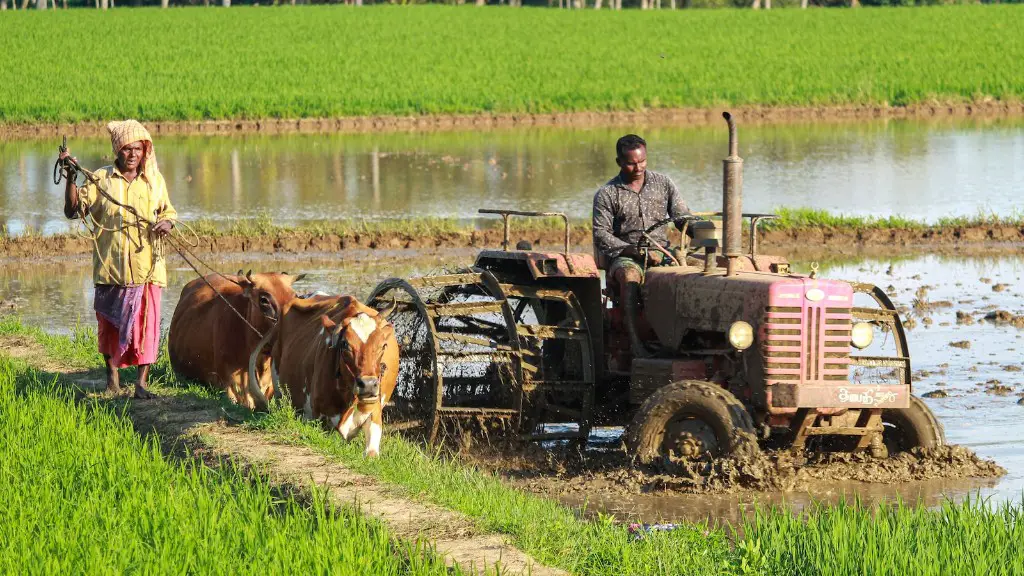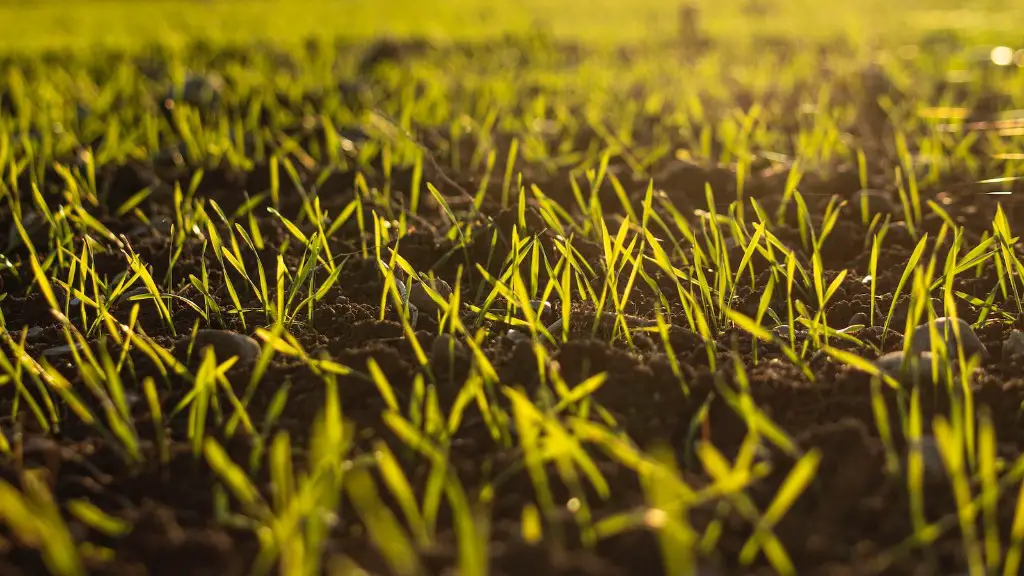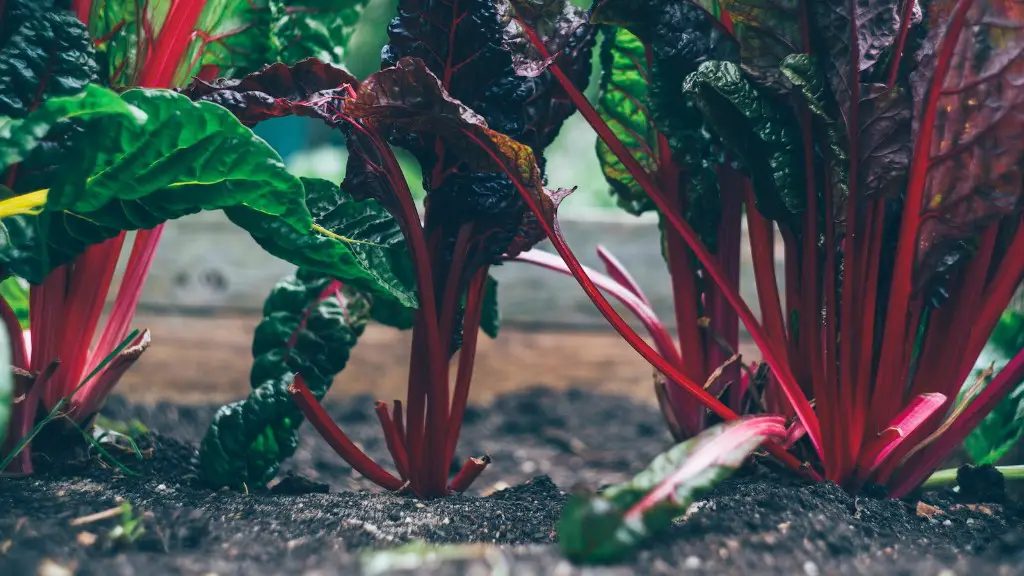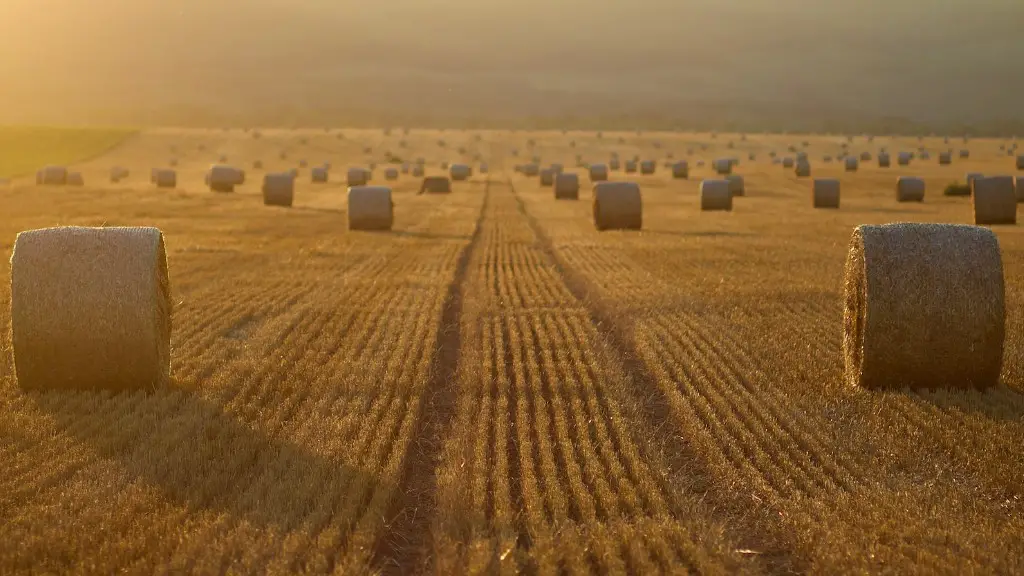Seed viability in agriculture is a concept that is applicable to a broad range of plants, from grasses to grains, fruits and vegetables. It focuses on the ability of a seed to germinate and begin to grow successfully. It gives a farmer or gardener an idea of how effective each batch of produced or purchased seed is. Viability is typically measured in terms of germination rate and seed vigor, which is a measure of the quality of the seed.
The germination rate measures how many of the tested seeds were able to bring forth a shoot and roots with the right environmental conditions in place. A germination rate of 85% is generally considered the cutoff point for good seed viability. Seed vigor takes the concept of germination rate one step further and assesses the full size and health of the newly planted seedlings. Symptoms of poor vigor include poor health, unnatural color, weak growth and poor root systems.
To assess seed viability, farmers and gardeners often employ a seed viability test. This involves exercising the seeds in a controlled environment, such as a laboratory setting. The seeds are given certain conditions like humidity, temperature and light that mimic those found in their natural environment, then the growth rate and health of the resulting plants is tracked over time. The results from the test can tell the user important information about the type and health of the seed in use.
Seed viability is an integral concept in agricultural practices and business. Knowing the viability of the plants used ensures that crops or gardens are as productive and healthy as possible. Additionally, seed companies can use this data to charge a premium for higher quality and more viable seeds, which can help to increase their profit margins. Poor seed health can lead to poor crop yields and can cause great losses in revenue for the farmer.
The health of the seed before sowing is the number one factor in the health of a crop or garden. By ensuring that only the best and highest quality seed is sown, farmers and gardeners can be sure of a successful harvest. Seed viability testing is one of the most important practices a farming business can undertake and can save immensely in lost revenue, time, and effort.
Measuring Seed Viability
Measuring seed viability properly is the key to achieving optimal crop growth. Tests usually involve suspending the seed in water or a medium such as agar, then counting the number of successful sprouts. This can provide a rough estimate of the total number of viable seeds, but it does not measure their vitality. Responsible seed producers will also conduct vigor tests to measure the ability of the seed to perform properly.
Seed viability testing also helps to determine the efficacy of different treatments that the seed may have undergone. This can include fungicidal treatments or treatments that are meant to help the seed survive harsh conditions. Knowing whether or not these treatments are successful can help the farmer choose the right treatment for their planting needs to ensure they produce the best quality crop possible.
Viability testing can also help to predict the purchase price of the seeds, since more viable seeds tend to sell for a higher price than those with low germination rates. By measuring the viability of the seed accurately the farmer can ensure that the price paid for the seed is justified and the crops will be healthy and sizeable.
Environmental & Cultural Factors
The environment in which seed is sown, as well as any cultural practices used in the seed production, can affect its viability. As an example, grass seed grown in laboratories typically has higher viability than seed harvested in outdoor environments. The laboratory removes many environmental factors, like pests and unpredictable weather, which can cause the seed to fail to reach its full potential.
Cultural practices also include treatments like the use of chemical fertilizers or insecticides that can drive up the cost of production. In cases of organic seed production, some growers opt to employ natural insecticides and spores to keep away pests while ensuring a higher germination rate. These practices can affect the cost of the seed but can also help to ensure it is physiologically healthy.
The environment and cultural practices employed to grow and produce seed can have a major impact on its viability. Knowing these factors can help farmers and gardeners to choose the best quality seed for their specific needs, as well as help seed producers to create sustainable practices that guarantee to yield a higher germination rate.
Seed Storage
Seed storage is one of the most important aspects of ensuring seed viability. A correctly stored seed has a much higher chance of being viable than one stored improperly. Factors like temperature and moisture levels can cause great damage to the seed if not managed correctly. It is important to store seed in sealed containers, away from direct sunlight and in consistent temperatures to prevent damages like mold and chemical changes.
The longevity of a seed depends greatly on the conditions in which it is stored. Keeping seeds in the appropriate temperatures and moisture levels ensures they remain viable and produce healthy yields. Additionally, the length of time a seed can retain its viability greatly depends on how it was stored and the type of seed it is. Some crops like carrots can retain high germination rates for over 10 years, whereas other crops like lettuce can have a viability rate of less than 2 years.
Effective seed storage is key to high germination rates and successful crop yields. Farmers and gardeners should pay close attention to the seed storage practices of their suppliers to ensure the highest quality seeds are purchased, as well as consider the environmental conditions of their seed storage areas to guarantee the longevity of their yield.
Importance of Seed Viability
The importance of seed viability in agriculture is immense. When a farmed crop yields a successful harvest, it usually comes down to the germination rate, vigor and quality of the seed used in the process. Knowing the actual viability of the seed before planting can make all the difference in the resulting yield quality.
Seed viability testing not only helps to measure the quality of the seed being used but it also helps to generate industry standards for certain types of seed. This helps to ensure uniformity in production as well as promote ethical seed production practices that benefit both buyers and sellers.
Additionally, it helps seed companies to make more informed decisions when purchasing seed from other producers. By having access to the viability data, buyers can determine the worth of the seed and make sure they are getting the most bang for their buck.
The concept of seed viability in agriculture is the key to successful crop yields and happy farmers. When conducted and managed properly, seed viability can help to ensure success in both wildlife and farmed crops.
Alternative Reasons For Using Seed Viability Tests
Seed viability tests are not just used to determine the quality of the seed before sowing. They can also be used to identify specific characteristics of the test crop and to assist with crop protection. For example, DNA-based seed tests and the use of molecular markers can help to track the origin of a particular seed, as well as identify any genetic issues that may be present.
Additionally, some seed tests are also used to identify seed health. These usually involve assessing the metabolic and nutritional content of the seed and comparing them to accepted industry standards. This helps companies to ensure a certain level of quality for the seed and, ultimately, for any generated yields.
Seed viability tests can also be used to assess the level of protection a crop has against external environmental factors. This is important in cases where crops require specific environmental conditions to flourish. These tests measure the levels of important vitamins and nutrients present in the seed, as well as their ability to survive in adverse conditions, to identify any areas in which protection may be needed.
Alternative seed tests such as those discussed above demonstrate the immense range of applications associated with seed viability tests. From origin identification to monitoring seed health and crop protection, these tests can be vital in ensuring sustainable and profitable yields.





